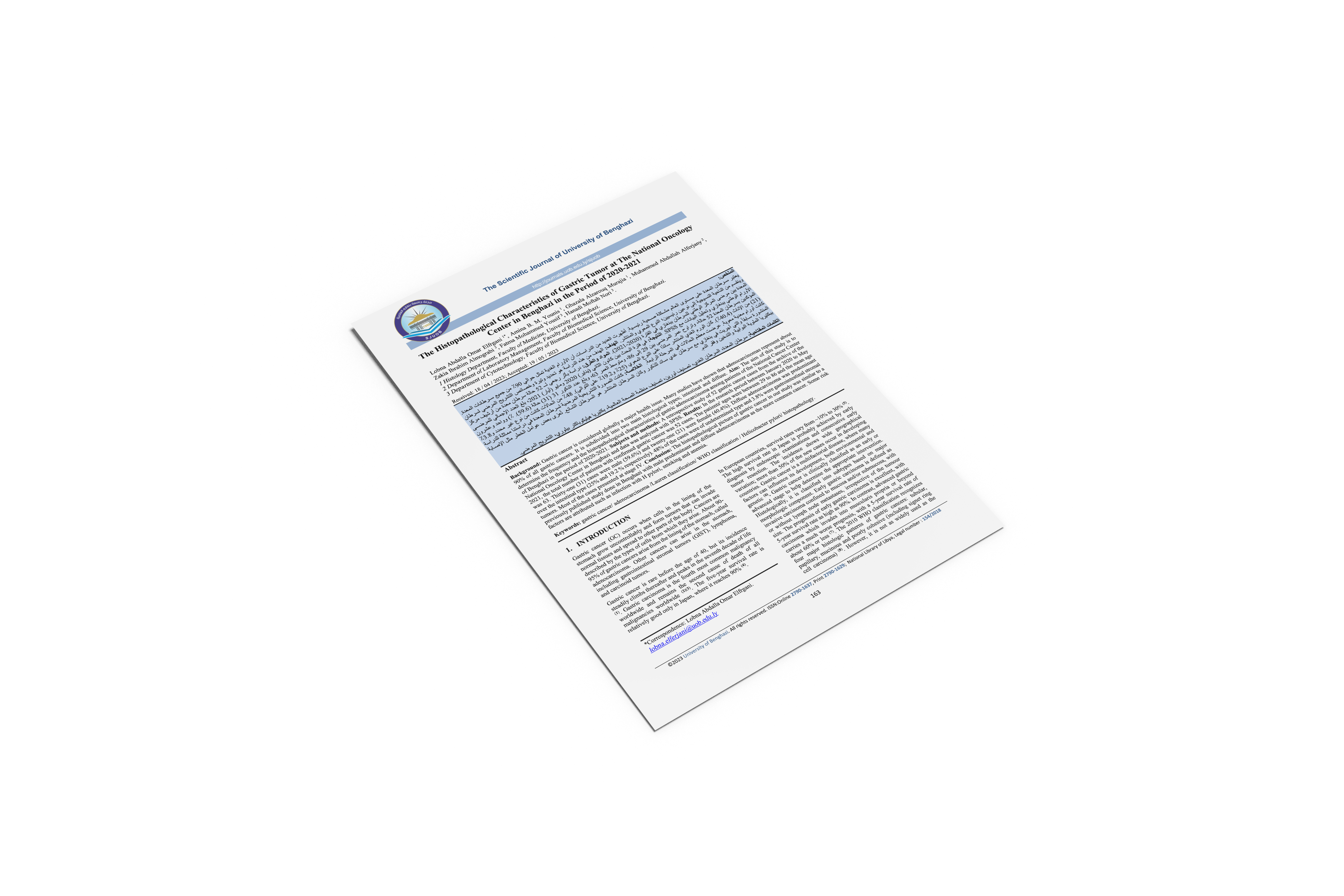The Histopathological Characteristics of Gastric Tumor at The National Oncology Center in Benghazi in the Period of 2020-2021
DOI:
https://doi.org/10.37376/sjuob.v36i1.3948Keywords:
gastric cancer, adenocarcinoma, Lauren classification, WHO classification, Helicobacter pylori, histopathologyAbstract
Background: Gastric cancer is considered globally a major health issue. Many studies have shown that adenocarcinomas represent about 90% of all gastric cancers. It is subdivided into two main histological types; intestinal and diffuse. Aim: The aim of this study is to determine the frequency and the histopathological characteristics of gastric adenocarcinoma among patients of the National Cancer Center of Benghazi in the period of 2020-2021. Subjects and methods: A retrospective study of 52 gastric cancer cases from the archive of the National Oncology Center in Benghazi and data was analyzed with SPSS. Results: In the research period between January 2020 to May 2021, the total number of patients with confirmed gastric cancer was 52 cases. The patients' ages were between 29 to 86 and the mean age was 63. Thirty-one (31) cases were male (59.6%) and twenty-one (21) were female (40.4%). Diffuse adenocarcinoma was predominant over the intestinal type (25% and 19.2 % respectively). 48% of the cases were of undetermined type and 3.8% were gastrointestinal stromal tumors. Most of the cases presented at stage IV. Conclusion: The histopathological picture of gastric cancer in our study was similar to a previously published study done in Benghazi with male predominant and diffuse adenocarcinoma as the more common cancer. Some risk factors are attributed such as infection with H pylori, smoking and anemia.
Downloads

Downloads
Published
How to Cite
Issue
Section
License
Copyright (c) 2023 The Scientific Journal of University of Benghazi

This work is licensed under a Creative Commons Attribution-NonCommercial-NoDerivatives 4.0 International License.


















